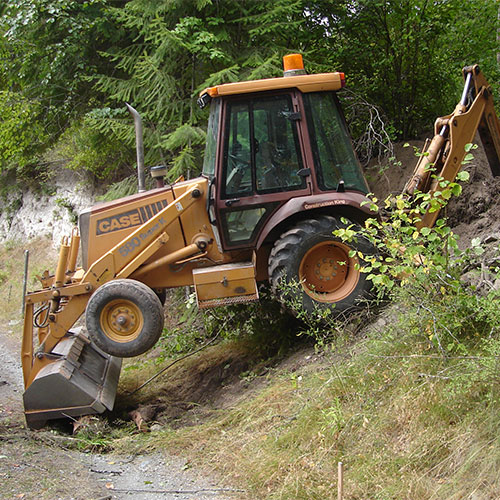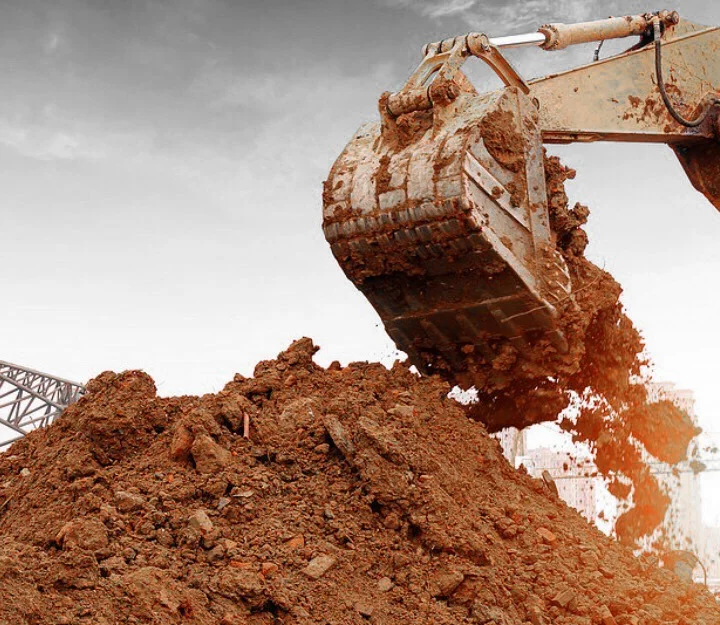Lancaster Trenching - Specialist Trenching Solutions in Lancaster, Ohio
Lancaster Trenching - Specialist Trenching Solutions in Lancaster, Ohio
Blog Article
In-Depth Exploration: The Science Behind Superior Excavation Practices
From old hand tools to modern-day hydraulic excavators, the advancement of excavation methods has been a testament to human resourcefulness and technical improvements. What really sets superior excavation practices apart is a deep understanding of geological principles, paired with the use of advanced devices and techniques.
Development of Excavation Methods
Throughout background, the development of excavation methods has played a crucial role beforehand building practices and historical discoveries. From the basic devices utilized by our ancestors to the innovative machinery employed in contemporary times, the progression of excavation approaches has significantly changed how we come close to various jobs.
In ancient times, manual work with basic devices such as shovels, wheelbarrows, and pickaxes was the key method of excavation. This labor-intensive procedure limited the deepness and extent of excavations, typically causing sluggish progression and restricted accessibility to certain sites. As human beings advanced, so did the methods and devices used for excavation.
The Industrial Revolution marked a turning factor in excavation techniques with the introduction of steam-powered machinery. This advancement revolutionized the field, permitting faster and a lot more extensive excavations. In contemporary times, innovation plays an essential duty in excavation, with advancements like GPS systems, drones, and 3D scanning improving precision and effectiveness in the area. The advancement of excavation strategies remains to shape the way we build, explore, and comprehend the world around us.
Duty of Innovation in Excavation

The integration of innovative modern technology has basically revolutionized the field of excavation, improving precision and efficiency to unmatched degrees - excavating ohio. One of the vital technical advancements that has dramatically impacted excavation methods is the utilization of General practitioner systems.
Furthermore, the introduction of 3D modeling and simulation software program has streamlined the preparation procedure for excavation jobs. Designers and operators can currently picture the whole excavation process prior to damaging ground, identifying prospective obstacles and enhancing operations. Combined with this, the application of drones in excavation activities has assisted in airborne studies, volumetric dimensions, and website inspections with unrivaled speed and accuracy.
Geological Principles in Excavation
An understanding of geological concepts is essential for ensuring the structural integrity and stability of excavation sites. Geological elements play a critical duty in establishing the feasibility and safety of excavation projects (septic ohio). One key geological principle to consider is the sort of dirt or rock existing at the website. Various dirt kinds, such as crushed rock, sand, or clay, have differing degrees of security and need different excavation techniques. Cohesive soils like clay might need extra support to avoid collapses, while sandy soils might be vulnerable to erosion throughout excavation.
Furthermore, the geological framework of the location, including mistakes, fractures, and rock formations, should be thoroughly assessed to identify possible dangers and challenges. Digging deep into near fault lines or unpredictable rock formations can bring about instability and prospective threats. By carrying out extensive geological studies and analysis, excavators and engineers can create techniques to minimize dangers and make certain the successful completion of excavation jobs. Inevitably, incorporating geological concepts into excavation methods is crucial for accomplishing secure, efficient, and sustainable outcomes.

Newest Tools for Excavation
In the realm of excavation methods, contemporary advancements in devices have actually reinvented the performance and accuracy of excavation processes. One of the most recent tools making waves in the industry is making use of drones equipped with innovative imaging modern technology. These drones can give thorough airborne surveys of excavation pop over to these guys sites, providing real-time data on topography and possible risks. This information help in far better preparation and decision-making during the excavation process.
Another cutting-edge device gaining appeal is the implementation of 3D printing technology for producing customized excavation equipment. This permits for the production of specialized devices that are tailored to the official site details demands of a task, boosting effectiveness and minimizing downtime.
Moreover, developments in products science have actually resulted in the growth of stronger and a lot more durable excavation devices. septic ohio. Tungsten carbide-tipped excavator accessories, for instance, offer premium performance in difficult ground problems, enhancing performance on-site
Science's Effect on Excavation Practices

Additionally, advancements in products science have brought about the development of stronger, much more sturdy excavation devices and equipment. As an example, the usage of composite materials in shovels and miners has enhanced their efficiency and longevity, inevitably boosting productivity on excavation websites. In addition, scientific study on soil mechanics and geotechnical design has provided useful insights into dirt actions, enabling excavation specialists to make educated choices concerning excavation techniques and dirt stabilization methods. Overall, science proceeds to drive development and enhancement in excavation techniques, making excavation projects a lot more reliable, affordable, and lasting.

Conclusion
In verdict, the evolution of excavation techniques has actually been significantly influenced by advancements in technology and a much deeper understanding of geological principles. The newest devices and devices used in excavation have boosted effectiveness and precision in the area. The application of scientific knowledge has actually substantially improved excavation practices, bring about a lot more efficient and sustainable approaches for digging deep into various sorts of materials.
In the realm of excavation practices, contemporary innovations in devices have actually reinvented the effectiveness and precision of excavation procedures. By leveraging clinical concepts, the excavation market has been able to significantly boost performance, precision, and security in excavation procedures. GPR allows excavation teams to non-invasively check and map subsurface frameworks, utilities, and possible threats, enabling them to plan excavation projects with better accuracy and decreased risk of crashes.
Furthermore, scientific research on dirt technicians and geotechnical engineering has given valuable understandings right into soil behavior, allowing excavation specialists to make enlightened choices concerning excavation approaches and dirt stabilization strategies. In general, scientific research proceeds to drive technology and renovation in excavation practices, making excavation tasks much more efficient, cost-efficient, and lasting.
Report this page